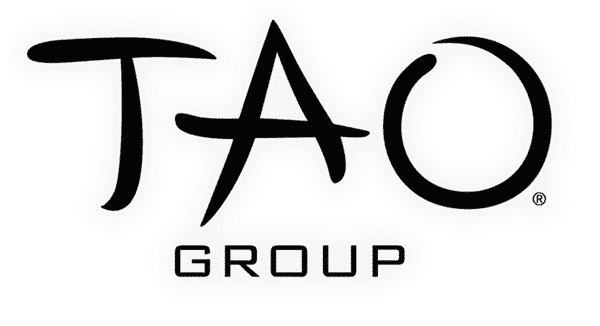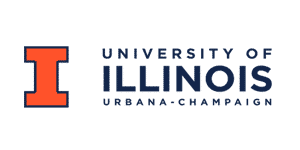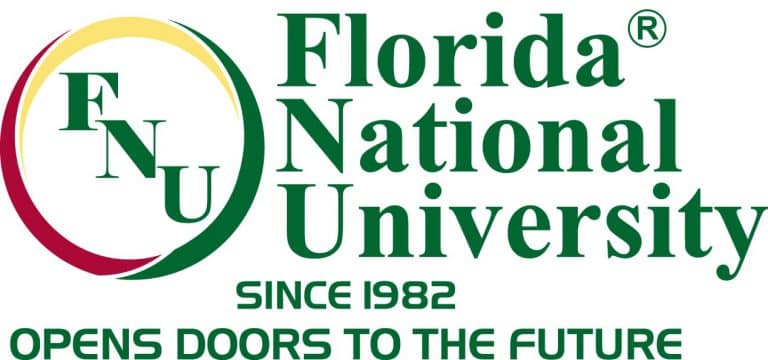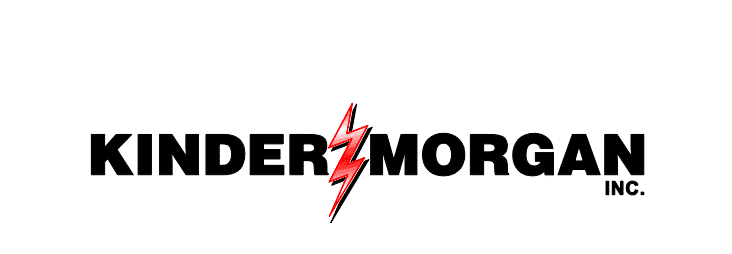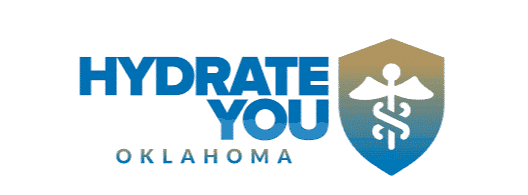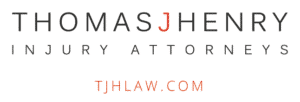
Imagine a world where every website is accessible to all users, regardless of their abilities, and perfectly optimized for search engines. This scenario is not just a dream, but a real possibility when understanding the crossover between SEO and website accessibility. By understanding the intersection of these two essential aspects of the digital world, businesses can create an inclusive online experience while also maximizing their visibility in search results.
Key Takeaways
Shared objectives and overlapping best practices are essential for creating an equitable digital experience.
Enhancing website accessibility can increase user engagement, time on site, and search engine visibility.
Businesses should prioritize both SEO and accessibility to ensure compliance with industry standards & create a more inclusive online presence.
The Intersection of SEO and Web Accessibility

An examination of search engine optimization and website accessibility uncovers their mutual goals and shared best practices, highlighting their interdependence. These two elements work together to make websites usable for all users, including those with disabilities, while also boosting search engine rankings and improving search results.
Merging web accessibility and SEO requires careful attention to keyword usage, semantic HTML application, and potential JavaScript issues, particularly for visually impaired users. Both web accessibility and SEO strive to enhance user experience and increase website visibility, making them interdependent and resulting in improvements in one often leading to enhancements in the other.
Grasping their mutual objectives and applying common best practices allows businesses to successfully tackle the challenges of combining SEO and accessibility, leading to a more inclusive and optimized online presence.
Shared Objectives
For SEO, it’s pivotal to organize and structure content so it’s comprehensible and searchable, which enhances the performance of websites in search engine algorithms. Metadata is fundamental to both SEO and accessibility, significantly impacting search engine rankings and supplying accurate titles and descriptions that communicate the page’s content to users using assistive technologies like screen readers.
The concept of color contrast within web accessibility pertains to the difference in luminosity between the background colors of a web page and the foreground colors, such as the text and content. Alt text is an HTML attribute value used to provide a brief description of the topic or appearance of an image, and HTML parsing is the process of taking in HTML code and extracting pertinent information such as the title of the page, paragraphs, headings, links, and anchor text.
Guaranteeing full keyboard functionality and adequate information architecture is vital to ensure digital accessibility, making website content equally accessible to all users, particularly those using assistive technologies.
Overlapping Best Practices

The areas of overlap between SEO and accessibility include the use of techniques such as metadata, alt text, and link anchor text. These key elements impact both search engine rankings and user experience accessibility, as they offer a structure and navigation for search engine crawlers and assistive technologies, respectively. For example, the use of a header 1 can demonstrate to search engines the primary content of the page, which serves a similar purpose for a screen reader user.
Alt tags, primarily used to enhance accessibility, can also be leveraged for SEO by providing a descriptive explanation of the image and including applicable keywords. The significance of meaningful anchor text for SEO and accessibility is considerable, as it facilitates navigation for disabled users and enables search engines to comprehend the importance of the anchor text.
Grasping and executing these shared best practices allows businesses to establish a more inclusive and optimized online presence.
Enhancing Website Accessibility for SEO Benefits

For successful SEO, it’s crucial to create a structure that makes content both comprehensible and searchable. Crafting concise, precise, and keyword-rich metadata can improve the quality and visibility of search engine listings and promote web accessibility.
Improving website accessibility for SEO can have several benefits, including:
Enhancing user experience
Boosting engagement rates
Leading to extended time on site
Indirectly affecting search rankings
Enhancing the visibility of search engine listings.
Businesses can maximize the benefits of integrating SEO and accessibility by focusing on optimizing page titles, structuring heading tags, and implementing descriptive anchor text. This will not only improve the overall user experience for all visitors, regardless of their abilities, but also ensure that their website is easily discoverable and properly indexed by search engines.
Optimizing Page Titles
Page titles are crucial to SEO, as they help search engines assess a page’s relevancy, with the title’s initial segment usually housing the most pertinent keywords and phrases. In terms of web accessibility, screen readers rely on page titles to inform users of the content of the page they are navigating. It is recommended that title tags should be between 50-60 characters with spacing, as this is the limit set by Google’s search engine.
Strategies such as the use of relevant and meaningful keywords, paragraph spacing, and limiting sentence length can be utilized to ensure website content is optimized for both SEO and web accessibility. By crafting accurate and relevant titles, businesses can improve the quality and visibility of their search engine listings, making it easier for users to find and access their website.
Structuring Heading Tags

HTML heading tags are vital for navigation using screen readers or assistive technology and for assisting search engines in emphasizing text size. It is suggested to use h1> tags for the primary title with the largest text, and then to gradually reduce the size with subsequent heading tags. Adhering to W3C Markup Validator is one of the many ranking factors for SEO and also contributes to web accessibility.
Having a well-structured heading tag structure is beneficial as it promotes accessibility and ensures that the largest text on webpages is accurately aligned with the page topic, which is likely to reflect keyword targets. By employing a logical hierarchy of heading tags, businesses can make it easier for both search engines and screen readers to understand and navigate their website content.
Implementing Descriptive Anchor Text
Alt text provides a textual description of an image, communicating its content and context to visually impaired users. Transcriptions can provide search engines with crawlable text, ensuring important keywords are included. Furthermore, they offer users with hearing impairments the opportunity to follow along and are beneficial for users unable to use audio.
To optimize anchor text for SEO and accessibility, it is recommended to:
Specify the exact destination of the link with 2-3 relevant keywords
Avoid overuse and keyword stuffing
Ensure high usability when utilizing anchor text in internal links
Implementing descriptive anchor text not only improves the user experience for all visitors but also helps search engines better understand the content and context of the linked pages.
Common Challenges in Combining SEO and Accessibility

A common challenge when aligning SEO and accessibility through keyword usage is ensuring that the use of keywords doesn’t detrimentally affect the website’s accessibility. Similarly, when combining SEO and accessibility through semantic HTML, it is important to ensure that the HTML code is structured in a way that is both accessible and optimized for search engines.
Merging SEO and accessibility can prove challenging when using JavaScript. Thus, it’s important to make sure that any JavaScript code used is accessible and doesn’t hinder website accessibility.
Comprehending these challenges and implementing strategies to surmount them enables businesses to establish a more inclusive and optimized online presence.
Balancing Keyword Usage
Keyword usage balancing refers to the practice of judiciously incorporating appropriate keywords into content without sacrificing readability. To optimize keyword usage for SEO, businesses should:
Match content with search intent
Design click-worthy title tags and meta descriptions
Enhance user experience on the website
Carry out keyword research to target relevant keywords
Generate high-quality and engaging content
When considering keyword usage balancing, there are a few challenges to consider. These include:
Ensuring the content is accessible to all users
Avoiding keyword stuffing and maintaining a natural flow of keywords
Understanding the audience’s interests, preferences, and language
Balancing the quantity and quality of keywords in the content
Using AI tools to analyze and optimize keyword usage
Ensuring Semantic HTML

Semantic HTML is a type of HTML markup that utilizes HTML elements to express meaning to the user. It is critical for both SEO and accessibility as it assists search engines and screen readers in comprehending the content of a website. Employing semantic HTML can assist in enhancing the SEO of a website by facilitating search engines to index the website properly.
To ensure semantic HTML, it is recommended to:
Use descriptive HTML tags
Select the appropriate HTML elements for the content
Avoid excessive use of divs
Apply proper indentation and spacing to make the code more readable.
By using semantic HTML, businesses can create a more accessible and search engine-friendly website, benefiting both their users and their online visibility.
Navigating JavaScript Issues
JavaScript heavy websites can take a prolonged period to render all the page content, potentially leading to search engines overlooking some of the content. JavaScript frameworks can impede the visibility of the underlying HTML semantics, resulting in missing or inconsistent semantic landmarks that screen readers rely on, especially for users with visual impairments.
To address JavaScript issues for SEO, businesses should:
Link pages with HTML anchor tags and descriptive anchor text
Avoid ‘cloaking’
Prioritize critical content
Test JavaScript functionality and performance
Prevent, diagnose, and troubleshoot ranking issues for websites and SPAs built on JavaScript frameworks
Check for common JavaScript SEO issues
Understand how Google handles JavaScript and how to troubleshoot issues.
By addressing these potential problems, businesses can create a website that is both accessible and optimized for search engines.
Legal Implications and Industry Standards

Notable cases of litigation have been seen in relation to the European Accessibility Act, the Americans with Disabilities Act, and the UK Equality Act, with entities such as Domino’s and even Beyoncé facing lawsuits due to accessibility issues on their websites for the visually impaired. The European Accessibility Act, introduced in 2019, stipulates that products and services such as computers and operating systems, smartphones, and ecommerce platforms must be compatible with assistive technologies, as well as presented in a format appropriate for all users.
Merging SEO and accessibility carries legal implications. Here are some reasons why it is essential to prioritize both SEO and accessibility:
Search engines such as Google may impose ranking penalties on websites that are not accessible.
Many countries have implemented legislation to ensure digital content accessibility, which means non-compliant websites may be at risk of legal action.
Prioritizing both SEO and accessibility helps avoid legal consequences and ensures compliance with industry standards.
Web Content Accessibility Guidelines (WCAG)
The Web Content Accessibility Guidelines (WCAG) are a set of standards and recommendations designed to make web content more accessible to individuals with disabilities. Compliance with the Web Content Accessibility Guidelines (WCAG) is crucial in making web content accessible to those with disabilities, thus promoting an inclusive online experience for all.
WCAG compliance is divided into three levels: A, AA, and AAA. Level A is the most basic level of compliance, while Level AAA is the most stringent. Adhering to WCAG standards can enhance the user experience for individuals with disabilities, as well as increase the overall accessibility of a website, which can boost a website’s search engine rankings.
Legal Requirements
Notable ADA website compliance lawsuits have included Beyonce’s website, Domino’s Pizza, and Nike. Legally, an accessible website is generally mandated. Consulting with legal teams is critical to ensure adherence to accessibility standards.
To ensure adherence to accessibility standards, businesses should:
Seek counsel from legal teams to guarantee compliance with accessibility standards
Adhere to the legal requirements and industry standards
Avoid potential legal action
Create a more inclusive online presence.
Tools and Resources for Assessing Accessibility and SEO
Accessibility and SEO are closely intertwined, as they both strive to enhance the user experience of a website. A variety of accessibility testing tools are available, such as:
WAVE
a11yTools
Testsigma
QualityLogic
QASource
JAWS
Dynomapper
Siteimprove
aXe by Deque
These tools are used to evaluate website accessibility.
SEO auditing tools are resources used to evaluate a website’s SEO performance, providing scores and recommendations for optimizing SEO. Some of the other SEO auditing tools that can be used include:
SEMrush Site Audit
SEOmator
SEOptimer
Ahrefs Site Audit
HubSpot SEO Analysis Tools
Accessibility Testing Tools
A variety of accessibility testing tools are available, such as:
WAVE Evaluation Tool
a11yTools
Testsigma
QualityLogic
QASource
JAWS
Dynomapper
Siteimprove
aXe by Deque
These tools are used to evaluate website accessibility. The WAVE Evaluation Tool, developed by webAIM.org, helps to check if the content is accessible or not. It features icons and indicators on the page for easy recognition.
axe Web Accessibility Testing is a Chrome extension that identifies accessibility defects on a webpage. It provides a user-friendly interface that clearly displays the location of any identified issues on the page. By utilizing these tools, businesses can identify areas of improvement in their website’s accessibility and make the necessary changes to create a more inclusive online experience.
SEO Auditing Tools
Google Lighthouse is an effective tool for web developers. It can provide performance, SEO and accessibility scores. Besides that, it also provides hints on improving website accessibility, like missing alt attributes on images and incorrect anchor text of links..
Some of the other SEO auditing tools that can be used include SEMrush Site Audit, SEOmator, SEOptimer, Ahrefs Site Audit, and HubSpot SEO Analysis Tools.
By using these SEO auditing tools, businesses can evaluate their website’s SEO performance and identify areas of improvement. This allows them to optimize their online presence, ensuring that their website is both accessible and search engine-friendly, resulting in a more inclusive and visible online experience for all users.
Case Studies: Successful Integration of SEO and Accessibility
Integrating SEO and accessibility effectively is the combination of SEO and accessibility strategies to enhance website performance and user experience. It has been demonstrated that:
Website accessibility has an impact on SEO rankings
Accessible websites tend to have higher SEO performance
Optimizing for both accessibility and SEO can result in a successful online presence.
Examples of businesses that have effectively combined SEO and accessibility strategies include Domino’s Pizza, Nike, and Beyoncé. These companies have faced legal consequences for failing to meet accessibility standards, but have since made changes to create a more inclusive online presence, subsequently improving their website performance and user experience.
Learning from these case studies can enlighten businesses on the importance of integrating SEO and accessibility strategies, leading in turn to a more successful online presence.
Summary
The integration of SEO and web accessibility is crucial for creating a successful online presence that is both inclusive and visible to all users. By understanding the shared objectives and overlapping best practices, businesses can effectively navigate the challenges associated with combining SEO and accessibility. Adhering to legal requirements and industry standards, as well as utilizing various tools and resources, can further enhance website performance and user experience. Ultimately, combining SEO and accessibility strategies can not only improve a website’s search engine rankings but also create a more inclusive online experience for all users.
Frequently Asked Questions
How do SEO and accessibility work together?
SEO and accessibility work together in that accessibility helps search engine algorithms better understand content to improve searchability, thus having a positive effect on SEO.
What are SEO and ADA principles?
SEO (Search Engine Optimization) is the process of optimizing websites for higher rankings on search engine results pages. ADA (Americans with Disabilities Act) principles are aimed at helping people with disabilities have access to the web and its content; its four main principles are that content must be perceivable, operable, understandable, and robust.
What are the 4 principles of web accessibility?
The four principles of web accessibility are known by the acronym POUR: Perceivable, Operable, Understandable and Robust. This is an approach to website accessibility that breaks it down into these four main areas to ensure content is accessible to all users.
What tools are available for assessing website accessibility?
Tools like WAVE Evaluation Tool, a11yTools, and axe Web Accessibility Testing are available to assess website accessibility and help businesses improve the user experience.
What are some examples of businesses that have successfully integrated SEO and accessibility?
Companies like Domino’s Pizza, Nike and Beyoncé have successfully integrated SEO and accessibility by creating more inclusive online presences, resulting in improved website performance and user experience.










